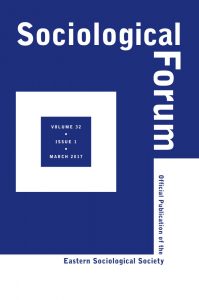Talent Agencies as Cultural Gatekeepers
 by bmckernan
by bmckernan
A few weeks ago, two of the largest talent agencies in America – William Morris and Endeavor – announced plans to merge into one corporate entity. The new mega-agency, entitled William Morris Endeavor (WME) will rival the current industry leader Creative Artists Agency (CAA) in both size and scope, representing some of the wealthiest and most critically acclaimed American entertainment personalities. According to a recent NY Times article, the merger illustrates the current ambiguity and instability in the entertainment business world, with traditional entertainment companies struggling to make sense of and profit from the changes ushered in by both the internet and digitalization to the entertainment world. From a sociological standpoint, the sheer size of this new agency serves as a reminder of the significant role cultural gatekeepers such as talent agencies play in the dissemination and experience of popular culture in the contemporary world.
Dating at least as far back as Howard Becker’s Art Worlds, social scientists have been aware of the significant role cultural gatekeepers play in the production and reception of cultural goods. According to these accounts, cultural gatekeepers are the figures and institutions that stand between creative personnel and their audiences. As these scholars astutely recognize, much of the cultural work being done today travels through intermediaries before it is finally experienced by its intended audiences. For example, on the creative end, artists require cultural gatekeepers such as film studios and publishing houses to distribute their cultural goods. Similarly, many Americans rely on film, television, and music critics to filter through the multitude of recent cultural offerings and highlight those worth experiencing.
While cultural gatekeepers such as publishers and critics have received a fair share of scholarly attention, the role “talent” agencies such as William Morris and Endeavor play as cultural gatekeepers has failed to receive a similar degree of academic recognition. Certainly, these agencies play just as important a role in the process, helping to determine not only which artists and performers will participate in particular projects but also when and where these projects will be experienced. The massive size of such agencies as WME and CAA serves as testament alone to the impact these organizations have on the entertainment world. Looking at talent agencies from this perspective provides some interesting insight into the entertainment world’s current state of affairs. If the NY Times article’s depiction is accurate, could the seemingly drastic measures taken by WME to stay relevant in a changing entertainment landscape be an indication of the occurrence of a more profound cultural transformation in contemporary society in general?
![]() NY Times article on agency merger
NY Times article on agency merger
![]() Jacqualine Pagani’s “Mixing Art and Life”
Jacqualine Pagani’s “Mixing Art and Life”

















1099-1328/asset/dsa_logo.jpg?v=1&s=e4815e0ca3064f294ac2e8e6d95918f84e0888dd)
1475-682X/asset/akdkey.jpg?v=1&s=eef6c6a27a6d15977bc8f9cc0c7bc7fbe54a32de)
While the mega-talent agency WME seems to have a lot of power, I wonder about the power of internet fame? Can this more democratic medium facilitate a path around the gatekeeper?
Keri